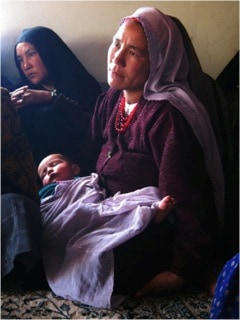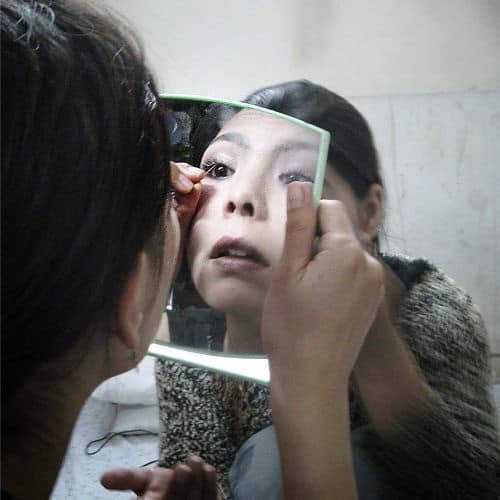I recently had the challenging pleasure of reading Julie Billaud’s Kabul Carnival on my first visit to Afghanistan. As a hybrid practitioner-academic who has spent the last couple of decades working with women in complex crisis situations, I usually try to find credible feminist sources that will help me navigate a new country. I often come away disappointed, either because what I read is so abstract I can’t usefully apply it, or because the author chooses not to apply the critical and theory-informed lens I look for in feminist analysis. Sitting in my cramped and dusty temporary container ‘house’ in Kabul, however, I found a gem of an account that I read and re-read during my stay.
In Billaud’s book, I found a home for my “feminist curiosity”, as Cynthia Enloe would put it: she was interested in answering questions I had about how Afghan women, with their long history of being appropriated by one regime or another as symbols of either modernity or ‘tradition’, negotiate both their apparent effacement from intimate as well as national life and their invisibility, as subjects, to the international community. This question is particularly pertinent since the USA has so casually – and with no grasp of the irony of taking a position that almost exactly echoes that of the Soviet invaders in 1979, or indeed, of the Afghan Kings before this – invoked women’s “oppression” to justify its own addiction to performing endless acts of violence in the name of “liberating” nations and “restoring” human rights. Indeed, the study opens with a strong chapter on the “constant reinvention of gender norms through the rewriting and reinterpretation of Afghan history” (p. 33) – a history of men’s ongoing trading of women’s rights and liberties to further nothing more than their own political ends. This chapter alone more than answered many of my questions about Afghan gender politics in the “modern” era.
Besides offering a much-needed political and historical overview of Afghan women, the central aim of the book is extremely ambitious: to “capture the nature of the ‘reconstruction’ project in Afghanistan, using the category ‘woman’ as an entry point into broader questions around sovereignty, state building, and democratization” (p. 6).
Billaud prepared herself for the research by learning Dari and living in the Kabul University National Women’s Dormitory for four months, gaining a level of closeness to her subjects and insight into the lives of contemporary Afghans that is exceptional. Given the large ambit of her study, Billaud hurtles her reader across a range of observations that can at times feel quite bewildering. But the book is well worth the ride.

It puzzled me at first that she places Mikhail Bakhtin’s re-reading of Rabelais’ carnival at the core of her analysis of the “invisible” young, urban women she encounters. In his own historic context of resistance to Stalinist fascism, Bakhtin insisted that, even when oppression seems absolute, there is always, still, a multiplicity of voices; and no matter how difficult the political situation is, he urges us to notice that some of them are dissenting voices. Yet neither Rabelais nor Bakhtin is remarkable for commenting on patriarchy as totalitarianism. So why reference him, in particular, when the insights of feminist scholars such as Judith Butler could be more easily and comfortably evoked for their argument that gender is always both performative and dissenting? It was not until the final, and most powerful chapter of the book, in which the suitability of her trope of the “carnival” was finally made clear to me. In this chapter, Billaud’s efforts to lay bare the limitations of the stereotype (and trope) of “women-as-victims” and her efforts to grasp the nettle of the performative aspects of gender, are movingly laid out in her close reading of “the rebellious dimension of female social performances” (p. 192) revealed to her through the (failed) suicide attempts of two sisters she befriended at Kabul University. Their story turns on her observation that “[the girls’] efforts for reconciling [their] family’s expectations with [their] own interpretations of Islam, honor, and modernity did not achieve any positive result” (p. 196). In recounting it, Billaud herself makes audible her demand that we try to understand the repertoires the oppressed adopt to make themselves heard, to “claim the last word,” to communicate in a seemingly impossible situation.
In Afghanistan, she observes, women, even through individual acts of self-harm, are drawing powerfully on a venerable history of women’s ‘poetic jihad’ as a site of performativity.
In so doing, they speak up in ways those in power over them find difficult to ignore. From their subordinate position, they intertextually enact their suffering and individual struggle, continuously referencing and adding to an ancient repertoire of women’s “poetic expressive forms” of pain and discontent that can be invoked to give “credibility and legitimacy” (p. 191) to contemporary knowledge claims, including those they struggle to make about their own desires.

In her reading, the girls’ suicide attempts become, as Althusser and then Butler would argue, an interpolated act: the sisters accept society’s summons to perform but in a way that subverts it. In so doing, they insist on the appropriateness and “goodness” of their desperate acts, making identity claims through self-negation. They tweak, disrupt and queer the dominant discourse and in so doing, Billaud proposes that they find a way to not only “imagine [a better world], but also know how to perform it differently” (p. 209). Neatly circling back to the argument she sets up in the first chapter, Billaud reminds the reader that the moment of the girls’ invoking their own abjection also has the effect of pointing out the abjection of all the males who try to hold power in their family, despite its erosion by the poverty and displacement of war. Revealing this problem allows her once more to bring into focus the duplicity of the promise of western “liberation” as it tears apart the structures that previously held together the lives of those – both women and men – that live in “the countries that must bear the burden of neo colonial/neoliberal domination,” with the “sharp rise in crime and violence…and lawlessness” (p. 15) and the dissolution of closely-knit networks that are its bitter results.
Readers familiar with Afghanistan will be, I predict, both deeply moved and deeply angered by this text. Billaud’s shaken-ness as she recounts and tries to make sense of her time in Afghanistan is profoundly disquieting. While she tries to find a positive strand to her narrative as she offers her invitation to understand Afghan women in far more complicated ways than glib media representations can ever allow; and while her intention is to keep the reader’s focus on the possibilities of participation, of registering dissent, of overturning the power structure for a brief, carnivalesque and redemptive moment, I was left with the aching sense that the desperate near-death experiences and exclusion, the “solutions” of suicidal girls are just that – desperate.
During my stay in Afghanistan, I constantly found myself both verifying and sharing Billaud’s observations with the Afghans and internationals I worked with.
More than that, I have continued to dip into it since my return home as I puzzle through my observations and experiences in Afghanistan. I have recommended it to, and enjoyed reading it with, my feminist-practitioner circle, which includes postgraduate students. I have found that it offers an accessible and provocative vehicle to convey many of the challenges we’re grappling with as we collectively try to calibrate our academic and activist responses to this century’s long wars, and especially, the “moral grammar mobilized to rally popular support for…military invasion” (5).
Bakhtin wrote about an era that we now look back on with horror: Stalinist totalitarianism, as he courageously recorded, was met with dissent by even the humblest. He insisted that we think in complicated ways when an apparently monolithic voice dominates the political scene. Likewise, Billaud makes the frightening observation that the contemporary discourses of “democratization” are repellent and murderous in their effect. Even as they claim to be just and emancipatory, and especially focused on liberating women, their effect is to destroy freedom and undermine even the most intimate spaces in which resistance has found previous footholds.
As an Afghan female doctor put it to me: “we resisted the Soviets. We endured the mujahedeen and the Taliban. But I do not think we can survive American democratization.”
Julie Billaud speaks powerfully to this appalling truth; but like Bakhtin, and Rabelais before him, and like the Afghan women she lovingly unveils in her book, “women’s expressive traditions,” their “embodied forms of understanding and connecting with the world” (p. 209) and their dissenting gender performances, remain the true site of resilience and continued struggle against the rigidifying norms that ongoing war and seemingly endless military occupation try to impose.
Billaud, Julie. Kabul Carnival: Gender Politics in Postwar Afghanistan. University of Pennsylvania Press. Series: The Ethnography of Political Violence. 256 pp. Cloth $55.00. ISBN 978-0-8122-4696-4.




